-

Sep
30
Interpretive Summary: Effects of iron, vitamin A, and the interaction between the two nutrients on intestinal development and cell differentiation in piglets

A study recently published in the Journal of Animal Science investigated the effects of iron, vitamin A, and their interaction on intestinal development and differentiation of cells in suckling piglets. The intestinal epithelium of piglets often changes significantly in the first month after birth; its development and function directly affects the absorption of nutrients.
Read more
-

Sep
27
Health Journals Call for Action in Climate Crisis
.png?sfvrsn=ad9a4cd1_0)
“The greatest threat to global public health is the continued failure of world leaders to keep the global temperature rise below 1.5°C and to restore nature. Urgent, society-wide changes must be made and will lead to a fairer and healthier world. We, as editors of health journals, call for governments and other leaders to act, marking 2021 as the year that the world finally changes course,” the authors stated.
Read more
-

Sep
27
White House Blames Meat Packers for Increased Prices

“There’s a long history of these giant meat processors making more and more, while families pay more at the grocery store and farmers and ranchers earn less for their products. Absent this corporate consolidation, prices would be lower for consumers and fairer for farmers and ranchers,” Deese stated.
Read more
-

Sep
27
USDA Updates Mask Requirements for Producers

The United States Department of Agriculture’s (USDA) Food Safety Inspection Service (FSIS) announced it will require official meat and poultry establishments, egg product plants, and all other facilities where FSIS provides official inspection services to follow current Center for Disease Control and Prevention (CDC) guidelines for mask use. If failure to comply, USDA will withdraw all Inspection Program Personnel (IPP) from the organization.
Read more
-

Sep
27
USDA Requests Comments on Cultured Meat Products
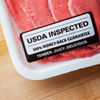
The United States Department of Agriculture’s (USDA) Food Safety and Inspection Service (FSIS) has published an advance notice of proposed rulemaking (ANPR) regarding the labeling of meat or poultry products derived from cultured animal cells.
Read more
-

Sep
27
USDA Offers Farm and Food Workers Relief Grants Program

This grant program is intended to contribute towards necessary personal, family, or living expenses related to the COVID-19 pandemic, such as costs for personal protective equipment, dependent care, and expenses associated with quarantines and testing related to the COVID-19 pandemic.
Read more
-

Sep
27
States Create Ways to Use, Reduce, and Eliminate Methane

According to the US Interagency Working Group on Social Cost of Greenhouse Gases Report, methane emissions are $1,756 per short ton, while carbon dioxide is $68. The law, Public Utilities Commission Modernize Gas Utility Demand-side Management Standards, requires that state regulators must take a longer-term view of the cost savings of reducing energy use. The hope is with that longer view, more programs that reduce demand through improved insulation and other devices will be justified as cost-effective.
Read more
-

Sep
27
MCOOL to be Reintroduced

The Act will reinstate Mandatory Country of Origin Labeling (MCOOL) for beef, something that has mixed reviews among those in the industry. It is worth noting, Booker recently introduced the Farm System Reform Act, which includes reinstating MCOOL, placing a moratorium on concentrated animal feeding operations, among other actions.
Read more
-

Sep
27
Livestock Disaster Relief Act Introduced

"This bipartisan bill will beef up critical livestock disaster programs, providing additional certainty so Montana ranchers can better weather disasters and emerge whole on the other side." The bill will make changes to the Livestock Forage Program (LFP) by increasing coverage for monthly feed costs to 80 percent, including unweaned cattle in eligible livestock, increasing the number of months a producer can receive payments, and improving the formula used to calculate monthly feed costs.
Read more
-

Sep
27
Food Labeling Modernization Act Introduced

The Act would update front-of-package food labeling requirements, require updates to the ingredient list on packaged foods, and apply consumer-friendly labeling requirements. “We need a clear, truthful system of labels for food products that ensure consumers can make informed dietary choices without being confused or misled,” said Senator Markey.
Read more
-

Sep
27
Biden’s Call for Increasing Utilization of the Wilderness Act of 1964 Criticized

The Wilderness Act of 1964 prohibits the use of motorized vehicles or mechanical tools. The Act established the National Wilderness Prevention system, a national network of more than 800 federally designated wilderness areas. The worry is that in many cases, it bans the active management that is necessary to curb the risk of wildfire, eradicate invasive species, maintain healthy habitat, and water sources for wildlife.
Read more
-

Sep
23
Interpretive Summary: Rapamycin administration during an acute heat stress challenge in growing pigs

Heat stress causes the animal industry over $2.5 billion in economic losses each year. As a result, much research has been conducted to mitigate the adverse effects of heat stress during the summer months. Some of the more identifiable adverse effects include decreased growth rates, altered characteristics, poor reproduction, and reduced milk yield; however, heat stress also markedly alters metabolism, endocrinology, and immunophysiology.
Read more
-

Sep
23
Interpretive Summary: Effect of bis-glycinate bound zinc or zinc sulfate on zinc metabolism in growing lambs
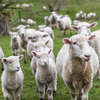
Zinc is required for optimal animal health and production, but feedstuffs often do not contain enough zinc to meet the requirement of animals, which means livestock are often provided supplemental zinc. Several sources of supplemental zinc are available, including inorganic and organic sources, and previous research has sought to compare the bioavailability of different zinc sources.
Read more
-

Sep
23
Interpretive Summary: Impact of four fiber-rich supplements on nutrient digestibility, colostrum production, and farrowing performance in sows
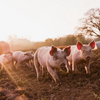
The role of dietary fiber in pig nutrition and health has received much research interest because of its versatility. Recently, research has been focused on the impact of either a single or a mixed dietary fiber source with a standard gestation diet.
Read more
-

Sep
23
Interpretive Summary: Inulin and isomalto-oligosaccharide alleviate constipation and improve reproductive performance by modulating motility-related hormones, short-chain fatty
.png?sfvrsn=6a9d4cd1_0)
Constipation in sows in the late gestation and lactation period is a common problem and can lead to dystocia or stillbirth, toxins in feces, uteritis, and mastitis and also influences the survival and growth of the piglets; it can also cause postpartum pain in sows and prolongs the time to litter and may also increase the release and absorption of bacterial endotoxins, resulting in postpartum dysfunction syndrome in sows.
Read more
-

Sep
20
Interpretive Summary: Clinical health markers in dogs fed raw meat-based or commercial extruded kibble diets
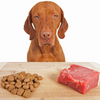
Nontraditional feeding methods, including raw, home-cooked, and naturally sourced ingredients, are believed to be superior to traditional extruded commercial dog foods by some owners and practitioners. There are some anecdotal reports of improved health benefits of raw meat-based diets that include cleaner teeth, decreased fecal output, improvement in skin and coat, and a decrease in inflammatory-related diseases; however, there is little evidence within the scientific community to support these findings.
Read more
-

Sep
20
Interpretive Summary: A longer adaptation period to a functional amino acid-supplemented diet improves growth performance and immune status of Salmonella Typhimurium-challenged pigs
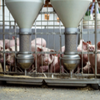
Recently, it was shown that dietary supplementation with key functional amino acids improves growth performance and immune status of Salmonella Typhimurium-challenged pigs, but it is not known if Salmonella Typhimurium-challenged pigs would benefit from a longer adaptation period to functional amino acids.
Read more
-

Sep
19
Interpretive Summary: Oxidative stress and postmortem meat quality in crossbred lambs
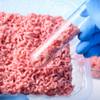
The mechanism of meat tenderization is well-recognized, but the impact of oxidative stress of skeletal muscle and its influence on factors critical to meat quality, as well as the impact of oxidative stress and its relationship toward the muscle transcriptome, has yet to be understood.
Read more
-

Sep
19
Interpretive Summary: Influence of air equilibration time, sampling techniques, and storage temperature on enzymatic starch availability of steam-flaked corn
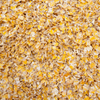
A recent study in the Journal of Animal Science conducted five experiments to evaluate factors influencing starch availability estimates of steam-flaked corn. This information is valuable because measuring enzymatic starch availability is commonly used as a quality control method to ensure steam-flaked corn manufacturing consistency in commercial cattle feeding operations, but starch availability estimates can be variable.
Read more
-

Sep
19
Interpretive Summary: In vivo estimation of lipogenesis using a bolus injection of [U-13C]glucose in pigs
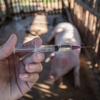
The use of radioactive isotopes to measure de novo lipogenesis in pigs has been well established; unlike radioactive isotopes, stable isotopes present little or no risk to human and animal subjects, but in vivo approaches to estimate de novo lipogenesis using stable isotopes have not been reported in pigs.
Read more
 SepInterpretive Summary: Effects of iron, vitamin A, and the interaction between the two nutrients on intestinal development and cell differentiation in piglets
SepInterpretive Summary: Effects of iron, vitamin A, and the interaction between the two nutrients on intestinal development and cell differentiation in piglets A study recently published in the Journal of Animal Science investigated the effects of iron, vitamin A, and their interaction on intestinal development and differentiation of cells in suckling piglets. The intestinal epithelium of piglets often changes significantly in the first month after birth; its development and function directly affects the absorption of nutrients.
A study recently published in the Journal of Animal Science investigated the effects of iron, vitamin A, and their interaction on intestinal development and differentiation of cells in suckling piglets. The intestinal epithelium of piglets often changes significantly in the first month after birth; its development and function directly affects the absorption of nutrients. SepHealth Journals Call for Action in Climate Crisis
SepHealth Journals Call for Action in Climate Crisis.png?sfvrsn=ad9a4cd1_0) “The greatest threat to global public health is the continued failure of world leaders to keep the global temperature rise below 1.5°C and to restore nature. Urgent, society-wide changes must be made and will lead to a fairer and healthier world. We, as editors of health journals, call for governments and other leaders to act, marking 2021 as the year that the world finally changes course,” the authors stated.
“The greatest threat to global public health is the continued failure of world leaders to keep the global temperature rise below 1.5°C and to restore nature. Urgent, society-wide changes must be made and will lead to a fairer and healthier world. We, as editors of health journals, call for governments and other leaders to act, marking 2021 as the year that the world finally changes course,” the authors stated. SepWhite House Blames Meat Packers for Increased Prices
SepWhite House Blames Meat Packers for Increased Prices “There’s a long history of these giant meat processors making more and more, while families pay more at the grocery store and farmers and ranchers earn less for their products. Absent this corporate consolidation, prices would be lower for consumers and fairer for farmers and ranchers,” Deese stated.
“There’s a long history of these giant meat processors making more and more, while families pay more at the grocery store and farmers and ranchers earn less for their products. Absent this corporate consolidation, prices would be lower for consumers and fairer for farmers and ranchers,” Deese stated. SepUSDA Updates Mask Requirements for Producers
SepUSDA Updates Mask Requirements for Producers The United States Department of Agriculture’s (USDA) Food Safety Inspection Service (FSIS) announced it will require official meat and poultry establishments, egg product plants, and all other facilities where FSIS provides official inspection services to follow current Center for Disease Control and Prevention (CDC) guidelines for mask use. If failure to comply, USDA will withdraw all Inspection Program Personnel (IPP) from the organization.
The United States Department of Agriculture’s (USDA) Food Safety Inspection Service (FSIS) announced it will require official meat and poultry establishments, egg product plants, and all other facilities where FSIS provides official inspection services to follow current Center for Disease Control and Prevention (CDC) guidelines for mask use. If failure to comply, USDA will withdraw all Inspection Program Personnel (IPP) from the organization. SepUSDA Requests Comments on Cultured Meat Products
SepUSDA Requests Comments on Cultured Meat Products The United States Department of Agriculture’s (USDA) Food Safety and Inspection Service (FSIS) has published an advance notice of proposed rulemaking (ANPR) regarding the labeling of meat or poultry products derived from cultured animal cells.
The United States Department of Agriculture’s (USDA) Food Safety and Inspection Service (FSIS) has published an advance notice of proposed rulemaking (ANPR) regarding the labeling of meat or poultry products derived from cultured animal cells. SepUSDA Offers Farm and Food Workers Relief Grants Program
SepUSDA Offers Farm and Food Workers Relief Grants Program This grant program is intended to contribute towards necessary personal, family, or living expenses related to the COVID-19 pandemic, such as costs for personal protective equipment, dependent care, and expenses associated with quarantines and testing related to the COVID-19 pandemic.
This grant program is intended to contribute towards necessary personal, family, or living expenses related to the COVID-19 pandemic, such as costs for personal protective equipment, dependent care, and expenses associated with quarantines and testing related to the COVID-19 pandemic. SepStates Create Ways to Use, Reduce, and Eliminate Methane
SepStates Create Ways to Use, Reduce, and Eliminate Methane According to the US Interagency Working Group on Social Cost of Greenhouse Gases Report, methane emissions are $1,756 per short ton, while carbon dioxide is $68. The law, Public Utilities Commission Modernize Gas Utility Demand-side Management Standards, requires that state regulators must take a longer-term view of the cost savings of reducing energy use. The hope is with that longer view, more programs that reduce demand through improved insulation and other devices will be justified as cost-effective.
According to the US Interagency Working Group on Social Cost of Greenhouse Gases Report, methane emissions are $1,756 per short ton, while carbon dioxide is $68. The law, Public Utilities Commission Modernize Gas Utility Demand-side Management Standards, requires that state regulators must take a longer-term view of the cost savings of reducing energy use. The hope is with that longer view, more programs that reduce demand through improved insulation and other devices will be justified as cost-effective. SepMCOOL to be Reintroduced
SepMCOOL to be Reintroduced The Act will reinstate Mandatory Country of Origin Labeling (MCOOL) for beef, something that has mixed reviews among those in the industry. It is worth noting, Booker recently introduced the Farm System Reform Act, which includes reinstating MCOOL, placing a moratorium on concentrated animal feeding operations, among other actions.
The Act will reinstate Mandatory Country of Origin Labeling (MCOOL) for beef, something that has mixed reviews among those in the industry. It is worth noting, Booker recently introduced the Farm System Reform Act, which includes reinstating MCOOL, placing a moratorium on concentrated animal feeding operations, among other actions. SepLivestock Disaster Relief Act Introduced
SepLivestock Disaster Relief Act Introduced "This bipartisan bill will beef up critical livestock disaster programs, providing additional certainty so Montana ranchers can better weather disasters and emerge whole on the other side." The bill will make changes to the Livestock Forage Program (LFP) by increasing coverage for monthly feed costs to 80 percent, including unweaned cattle in eligible livestock, increasing the number of months a producer can receive payments, and improving the formula used to calculate monthly feed costs.
"This bipartisan bill will beef up critical livestock disaster programs, providing additional certainty so Montana ranchers can better weather disasters and emerge whole on the other side." The bill will make changes to the Livestock Forage Program (LFP) by increasing coverage for monthly feed costs to 80 percent, including unweaned cattle in eligible livestock, increasing the number of months a producer can receive payments, and improving the formula used to calculate monthly feed costs. SepFood Labeling Modernization Act Introduced
SepFood Labeling Modernization Act Introduced The Act would update front-of-package food labeling requirements, require updates to the ingredient list on packaged foods, and apply consumer-friendly labeling requirements. “We need a clear, truthful system of labels for food products that ensure consumers can make informed dietary choices without being confused or misled,” said Senator Markey.
The Act would update front-of-package food labeling requirements, require updates to the ingredient list on packaged foods, and apply consumer-friendly labeling requirements. “We need a clear, truthful system of labels for food products that ensure consumers can make informed dietary choices without being confused or misled,” said Senator Markey. SepBiden’s Call for Increasing Utilization of the Wilderness Act of 1964 Criticized
SepBiden’s Call for Increasing Utilization of the Wilderness Act of 1964 Criticized The Wilderness Act of 1964 prohibits the use of motorized vehicles or mechanical tools. The Act established the National Wilderness Prevention system, a national network of more than 800 federally designated wilderness areas. The worry is that in many cases, it bans the active management that is necessary to curb the risk of wildfire, eradicate invasive species, maintain healthy habitat, and water sources for wildlife.
The Wilderness Act of 1964 prohibits the use of motorized vehicles or mechanical tools. The Act established the National Wilderness Prevention system, a national network of more than 800 federally designated wilderness areas. The worry is that in many cases, it bans the active management that is necessary to curb the risk of wildfire, eradicate invasive species, maintain healthy habitat, and water sources for wildlife. SepInterpretive Summary: Rapamycin administration during an acute heat stress challenge in growing pigs
SepInterpretive Summary: Rapamycin administration during an acute heat stress challenge in growing pigs Heat stress causes the animal industry over $2.5 billion in economic losses each year. As a result, much research has been conducted to mitigate the adverse effects of heat stress during the summer months. Some of the more identifiable adverse effects include decreased growth rates, altered characteristics, poor reproduction, and reduced milk yield; however, heat stress also markedly alters metabolism, endocrinology, and immunophysiology.
Heat stress causes the animal industry over $2.5 billion in economic losses each year. As a result, much research has been conducted to mitigate the adverse effects of heat stress during the summer months. Some of the more identifiable adverse effects include decreased growth rates, altered characteristics, poor reproduction, and reduced milk yield; however, heat stress also markedly alters metabolism, endocrinology, and immunophysiology. SepInterpretive Summary: Effect of bis-glycinate bound zinc or zinc sulfate on zinc metabolism in growing lambs
SepInterpretive Summary: Effect of bis-glycinate bound zinc or zinc sulfate on zinc metabolism in growing lambs Zinc is required for optimal animal health and production, but feedstuffs often do not contain enough zinc to meet the requirement of animals, which means livestock are often provided supplemental zinc. Several sources of supplemental zinc are available, including inorganic and organic sources, and previous research has sought to compare the bioavailability of different zinc sources.
Zinc is required for optimal animal health and production, but feedstuffs often do not contain enough zinc to meet the requirement of animals, which means livestock are often provided supplemental zinc. Several sources of supplemental zinc are available, including inorganic and organic sources, and previous research has sought to compare the bioavailability of different zinc sources. SepInterpretive Summary: Impact of four fiber-rich supplements on nutrient digestibility, colostrum production, and farrowing performance in sows
SepInterpretive Summary: Impact of four fiber-rich supplements on nutrient digestibility, colostrum production, and farrowing performance in sows The role of dietary fiber in pig nutrition and health has received much research interest because of its versatility. Recently, research has been focused on the impact of either a single or a mixed dietary fiber source with a standard gestation diet.
The role of dietary fiber in pig nutrition and health has received much research interest because of its versatility. Recently, research has been focused on the impact of either a single or a mixed dietary fiber source with a standard gestation diet. SepInterpretive Summary: Inulin and isomalto-oligosaccharide alleviate constipation and improve reproductive performance by modulating motility-related hormones, short-chain fatty
SepInterpretive Summary: Inulin and isomalto-oligosaccharide alleviate constipation and improve reproductive performance by modulating motility-related hormones, short-chain fatty.png?sfvrsn=6a9d4cd1_0) Constipation in sows in the late gestation and lactation period is a common problem and can lead to dystocia or stillbirth, toxins in feces, uteritis, and mastitis and also influences the survival and growth of the piglets; it can also cause postpartum pain in sows and prolongs the time to litter and may also increase the release and absorption of bacterial endotoxins, resulting in postpartum dysfunction syndrome in sows.
Constipation in sows in the late gestation and lactation period is a common problem and can lead to dystocia or stillbirth, toxins in feces, uteritis, and mastitis and also influences the survival and growth of the piglets; it can also cause postpartum pain in sows and prolongs the time to litter and may also increase the release and absorption of bacterial endotoxins, resulting in postpartum dysfunction syndrome in sows. SepInterpretive Summary: Clinical health markers in dogs fed raw meat-based or commercial extruded kibble diets
SepInterpretive Summary: Clinical health markers in dogs fed raw meat-based or commercial extruded kibble diets Nontraditional feeding methods, including raw, home-cooked, and naturally sourced ingredients, are believed to be superior to traditional extruded commercial dog foods by some owners and practitioners. There are some anecdotal reports of improved health benefits of raw meat-based diets that include cleaner teeth, decreased fecal output, improvement in skin and coat, and a decrease in inflammatory-related diseases; however, there is little evidence within the scientific community to support these findings.
Nontraditional feeding methods, including raw, home-cooked, and naturally sourced ingredients, are believed to be superior to traditional extruded commercial dog foods by some owners and practitioners. There are some anecdotal reports of improved health benefits of raw meat-based diets that include cleaner teeth, decreased fecal output, improvement in skin and coat, and a decrease in inflammatory-related diseases; however, there is little evidence within the scientific community to support these findings. SepInterpretive Summary: A longer adaptation period to a functional amino acid-supplemented diet improves growth performance and immune status of Salmonella Typhimurium-challenged pigs
SepInterpretive Summary: A longer adaptation period to a functional amino acid-supplemented diet improves growth performance and immune status of Salmonella Typhimurium-challenged pigs Recently, it was shown that dietary supplementation with key functional amino acids improves growth performance and immune status of Salmonella Typhimurium-challenged pigs, but it is not known if Salmonella Typhimurium-challenged pigs would benefit from a longer adaptation period to functional amino acids.
Recently, it was shown that dietary supplementation with key functional amino acids improves growth performance and immune status of Salmonella Typhimurium-challenged pigs, but it is not known if Salmonella Typhimurium-challenged pigs would benefit from a longer adaptation period to functional amino acids. SepInterpretive Summary: Oxidative stress and postmortem meat quality in crossbred lambs
SepInterpretive Summary: Oxidative stress and postmortem meat quality in crossbred lambs The mechanism of meat tenderization is well-recognized, but the impact of oxidative stress of skeletal muscle and its influence on factors critical to meat quality, as well as the impact of oxidative stress and its relationship toward the muscle transcriptome, has yet to be understood.
The mechanism of meat tenderization is well-recognized, but the impact of oxidative stress of skeletal muscle and its influence on factors critical to meat quality, as well as the impact of oxidative stress and its relationship toward the muscle transcriptome, has yet to be understood. SepInterpretive Summary: Influence of air equilibration time, sampling techniques, and storage temperature on enzymatic starch availability of steam-flaked corn
SepInterpretive Summary: Influence of air equilibration time, sampling techniques, and storage temperature on enzymatic starch availability of steam-flaked corn A recent study in the Journal of Animal Science conducted five experiments to evaluate factors influencing starch availability estimates of steam-flaked corn. This information is valuable because measuring enzymatic starch availability is commonly used as a quality control method to ensure steam-flaked corn manufacturing consistency in commercial cattle feeding operations, but starch availability estimates can be variable.
A recent study in the Journal of Animal Science conducted five experiments to evaluate factors influencing starch availability estimates of steam-flaked corn. This information is valuable because measuring enzymatic starch availability is commonly used as a quality control method to ensure steam-flaked corn manufacturing consistency in commercial cattle feeding operations, but starch availability estimates can be variable. SepInterpretive Summary: In vivo estimation of lipogenesis using a bolus injection of [U-13C]glucose in pigs
SepInterpretive Summary: In vivo estimation of lipogenesis using a bolus injection of [U-13C]glucose in pigs The use of radioactive isotopes to measure de novo lipogenesis in pigs has been well established; unlike radioactive isotopes, stable isotopes present little or no risk to human and animal subjects, but in vivo approaches to estimate de novo lipogenesis using stable isotopes have not been reported in pigs.
The use of radioactive isotopes to measure de novo lipogenesis in pigs has been well established; unlike radioactive isotopes, stable isotopes present little or no risk to human and animal subjects, but in vivo approaches to estimate de novo lipogenesis using stable isotopes have not been reported in pigs.



